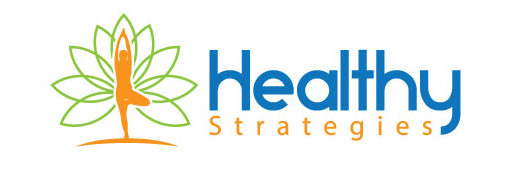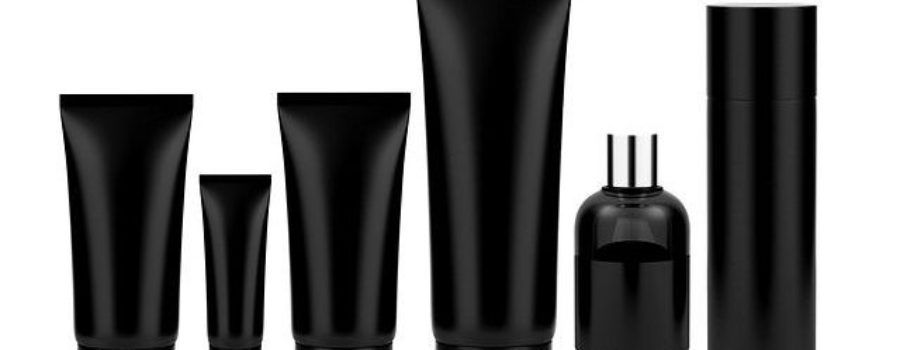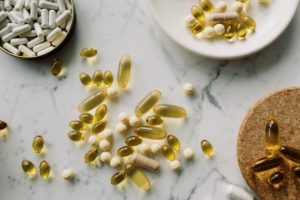Carcinogen-Contaminated Ingredients in Cosmetics
I have been talking in the last few posts about the carcinogenic ethylene oxide. For many of us, this sounds just like a chemical the industry utilizes to produce useful, non-toxic derivatives, right? Wrong!
One problem is that these newly derived products acquire new properties— not necessarily beneficial for us. The other problem is that, just like in many chemical reactions, the “parent component” remains as a contaminant. And just like in the saying the “apple doesn’t fall far from the tree,” the “off-springs” resulting from such a “parent” can’t be without consequences for our well-being. Unfortunately, these bad apples are falling on us.
The new substances produced from this “parent component” are usually large chains of ethylene oxide (polymerized molecules), called polyethylene glycols—PEGs— (also known as polyoxyethylene or polyethylene oxide). Others are smaller molecules obtained after reacting ethylene oxide with ammonia (ethanoalmines) or phenol (phenoxyethanol).
They can be found in multiple cosmetic products we use at least a few times a day (soap, shower gel, shampoo, conditioner, hand and face cream, deodorant, makeup, shaving products, sunscreen, toothpaste, and so on). They are also included in foods, especially the processed ones, and surprisingly, in many we think of as being healthy. To all these, we can add the amounts from medications, vitamins, and other supplements.
In many products ethylene oxide derivatives included appear as the polymerized product, under their long and difficult to pronounce names and I will specify a few.
- polyethyleneglycols (PEGs)—listed like this or as the following:
-PEG compounds appearing as PEG followed by a number (PEG-20 stearate, PEG-8 avocado oil, and so on)
-PEG-containing products with names that end in “eth” (cetareth, steareth, laureth)
- polysorbates—all (20, 60, 80, and so on)
- nonoxynol-9 (used as spermicide in condoms) and other nonylphenol ethoxylates
- phenoxyethanol
- ethanolamines (mono-, di-, or triethnolamine): MEA, DEA, TEA
Don‘t be tricked by cocamide-DEA “coconut derived“!
- poloxamer (a combination of polymers of ethylene oxide and another chemical—propylene oxide).
Speaking of this propylene oxide, some of its derivatives are also included in personal care products and medications:
- propylene glycol is a common encounter
- propylene-oxide-derived semisynthetic celluloses—hydroxypropyl cellulose (HPC) and hydroxypropyl methylcellulose (HPMC)
You could have seen one of these names on supplements labels, because hydroxypropyl methylcellulose (HPMC)—also called hypromellose, is used to make the so-called “vegetable capsules” that encase numerous vitamins and supplements.
An alternative to hypromellose are the gelatin capsules, but many mislead consumers prefer “vegetable capsules.” Except that they are really chemical, plastic capsules that happen to include some cellulose. As I read somewhere, “semisynthetic doesn’t mean half as bad when compared to full synthetics.” There are two versions of true vegetable capsules, and are usually clearly specified on the lists, as pullulan and gellan capsules; they are used rarely at present time.
Here are some ingredient lists showing ethylene oxide derivatives and I will highlight these chemicals as we go through them.
- body lotion—water, sesame oil, isopropyl myristate, glycerin, PEG 100 stearate (3), PEG/PPG 18/18 dimethicone, methylparaben, ethylparaben, propylparaben, cetearyl alcohol, glyceril stearate acrylates/c 10 30 alkyl acrylate crosspolymer, xanthan gum, triethanolamine, diazolinidyl urea, BHT, fragrance
- moisturizing cream—water, glycerin, petrolatum, glycerol stearate, acetyl alcohol, almond oil, PEG 30 stearate, acrylate/c10 30 alkyl acrylate crosspolymer, phenoxyethanol, methylparaben, propylparaben, propylene glycol, dimethiconone, benzyl alcohol, disodium EDTA, sodium hydroxide
- body wash—water, sodium laureth sulfate, cocami-dopropyl betaine, fragrance, polysorbate 20, tetra- sodium EDTA, PEG 80 sorbitan laurate, citric acid, DMDM hydantoin
Along with these, you see other unsafe ingredients from different categories, but mainly estrogen-mimicking chemicals like parabens or formaldehyde-releasing substances (DMDM hydantoin), responsible for numerous allergic reactions.
If you check your cosmetics, you’ll likely see more chemical names like petrolatum, mineral oil, phthalates, triclosan, synthetic musks, quaternium, polyacrylamide, resorcinol, phenylendiamine, and many others. When you see fragrance, it usually means a “cocktail” of multiple chemicals, from over 3,000 undisclosed—”trade secret” ingredients, available to the manufacturers. If you look at the sunscreens, there are some more hormone disruptors (octinoxate, homosalate, oxybenzone, benzophenone 2, and para-aminobenzoic acid—PABA).
As opposed to these lists, here are some for healthier products:
- shampoo and body wash—water, [decyl glucoside, lauryl glucoside, vegetable glycerin—derived from palm fruit kernel and/or coconut], Quilaja saponaria (soap bark), Calendula officinalis flower extract, Viola tricolor (pansy) extract, yucca extract, aloe vera leaf juice, Simmondsia chinensis (jojoba) oil, hydrolyzed quinoa protein, xanthan gum, panthenol (vitamin B5), pure essential oils of Lavandula angustifolia (French lavender), Salvia sclarea (clary sage), phytic acid, gluconolactone (sourced from corn, non-GMO), and sodium benzoate
- body cream—water, Calendula officinalis flower infusion, caprylic triglycerides, glyceryl stearate, glyceryl caprylate, cetearyl alcohol, cetyl alcohol, stearic acid [all of these are low hazard, and sourced from olive and coconut] canola oil, safflower seed oil polyglyceryl-4 esters, Aloe barbadensis (aloe vera) leaf juice, Yucca schidigera root extract, Calendula officinalis extract in vegetable glycerin, allantoin, levulinic acid, P-anisic acid, Viola tricolor (pansy) extract, Catharmus tinc- torius (safflower) oleosomes, Oenothera bienis (evening prim- rose), Rosmarinus officialis, xanthan gum, pure essential oils of Lavandula angustifolia (French lavender), Salvia sclearea (Clary sage), and phytic acid (rice origin).”
As you can appreciate, most of these ingredients are plant derived, and even the few synthetic ones (that I like to call “benign”), are low hazard according to the Environmental Working Group (EWG) toxicity rating scale (where 1 is the least toxic and 10 the most toxic). Citric acid, P-anisic acid, phytic acid, and levulinic acid have a toxicity hazard of 1; others, like potassium sorbate or sodium benzoate have a toxicity hazard of 3, which for cosmetics may be more acceptable, but they are also used in foods, where I completely avoid them.
I need to add here that the conventional laundry and cleaning products are more toxin laden, and you probably figured out they are not quite healthy because of the multiple skin allergic reactions, runny nose, headache, cough, and even shortness of breath—symptoms they produce in a lot of people who are sensitive to them. You may have experienced some of these discomforts firsthand when you go shopping for them; you probably cough or get a slight headache if you spend some time on that aisle in the stores.
A lot of ethylene oxide derivatives are used in them and I’m going to mention some of their names, so you’ll better see what I mean: (1-ethoxyethoxy)-cyclododecane; (z)1-ethoxy-3,7- dimethylocta-2,6-diene; 2-ethoxy-2 6,6-trimethyl-9-methylenebicyclo [3.3.1] nonane; 2-ethoxy-4-(methoxymethyl) phenol; 2-ethoxy-4-methylphenol; (1-ethoxyvinyl)-3,3,5,5-tet- ramethylcyclohexene; 2-phenoxyethanol 2-phenoxyethyl isobu- tyrate 2-phenoxyethyl propionate.
Many of the ethylene oxide ingredients I talked about are also included in medications, given in any form—intravenous, oral (by-mouth), creams, suppositories, suspensions and drops. And it involves the prescription or over-the-counter medicines for all ages. If anything, they are more often than not included in pediatric suspensions and drops compared to certain tablets.
I will reveal more about medications in a following post. There is enough homework for now to decipher cosmetics and food labels.



